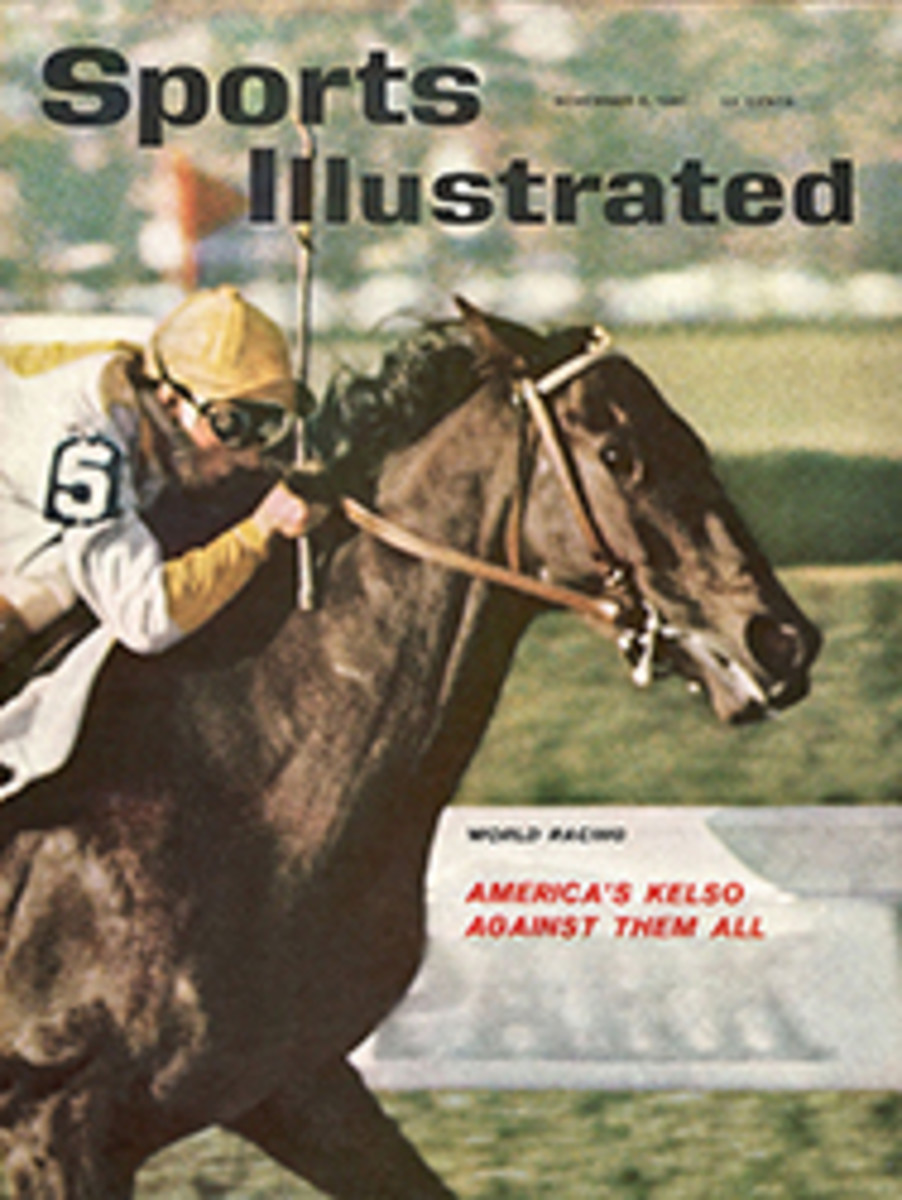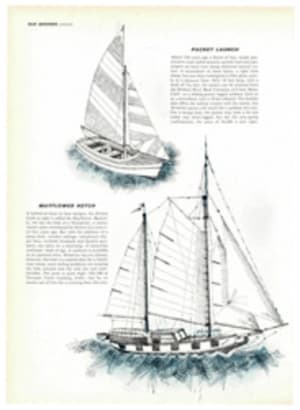
18 FOOTBALL DEATHS: IS IT THE HELMET?
The football helmet pictured here will not be seen on any player's head this season, but it is on lots of people's minds. An artist's composite, it represents some of the most urgent thinking in what is needed to give a player adequate protection—and such protection has never been needed more.
•Item: In Ortonville, Minn. recently, high school player Joel Brown rose from a pileup, ran 15 yards on the next play, collapsed and died an hour later. The cause: cerebral hemorrhage.
•Item: In Falls City, Texas, tackle Caspar Wiatrek lay unconscious after having had a block thrown at him, died in the hospital 6 hours later. The cause: cerebral hemorrhage.
•Item: In Nappanee, Ind., high school player Larry Slabaugh dived headfirst at the ball carrier, was rushed to the hospital when he failed to rise, died there before the game was over. The cause: hemorrhage of the soft tissue of the brain.
•Summary: With half the season still to go, 14 high school boys have died (nearly 6 more than the yearly average of 8.8 compiled since 1951), and four college players have been killed (nearly three more than the yearly average of 1.1)—all, apparently, from injuries stemming directly from the game.
These are the most tragic statistics football has known since 1947, when 14 high school deaths and one fatality among college players shocked officials, coaches and medical experts into a complete reappraisal of the safety equipment worn for the game. That was 14 years ago, and in the interim football has once again outgrown its own protective gear. "What we need," says Stanford's Jack Curtice, president of the American Football Coaches Association, "is a real study of equipment—of helmets and all the rest," to which Los Angeles State's Dr. Floyd Eastwood, the chairman of the AFCA's committee on injuries, adds: "Improvements must be made."
The most urgent improvements are needed in the helmet—three-fourths of all fatalities thus far have been due to head and neck injuries. The problem is complicated by the fact many players use their hard-shell helmets as weapons; hence, the helmet must be made not only safer for the man who wears it, but less lethal for the opposition.
Three years ago it seemed that a real breakthrough in helmet design had been made. The late Edward Dye, a nationally known safety engineer who was then associated with Cornell's Aeronautical Laboratory, developed a helmet featuring a geodetic-type suspension system. In this system the straps within the helmet were so arranged as to diffuse the force of a blow around the skull—just as if the shock was being spread around a sphere. Moreover, it held the player's head immobile when the helmet was struck, whereas in the usual sling suspension the head could—and often did—move jarringly under a blow. Dye's helmet also featured a beampad—a shock-absorbing strip of Ensolite that circled the inside of the shell horizontally, protecting against blows to the temple as few previous helmets did.
It didn't sell
Dye turned the helmet over to the MacGregor Sporting Goods Co., which had financed his research, and it was tested on the open market. It failed to sell, MacGregor says, because it was so uncomfortable that players refused to wear it. The company thereupon developed a helmet of its own that used geodetic suspension but was completely padded on the inside of the shell.
The MacGregor helmet represented a step forward in providing safety for its wearer, but it also proved to be among the most expensive made. Perhaps because of this, it never gained widespread popularity. Moreover, many coaches feel that the Dye helmet was dropped too soon. Still others are tackling the problem from other angles—among them Frank Kavanagh, the Cornell trainer who performed the field tests for Dye.
Kavanagh's theory is that the helmet must fit the skull the way a glove fits the hand, without any suspension system at all. A new helmet of his own design is, accordingly, completely padded on the inside with a brand-new shock-absorbing material. And Kavanagh is padding the outside of the helmet as well: "All hard, rigid shells should be covered," he says. "Not only to protect opponents, but to help absorb the force of the blow to the skull of the wearer." Cornell, Kavanagh says, has been using exterior padding for years, and it has significantly decreased the number of head injuries.
Another research scientist who has definite ideas on helmet design is Dr. George Snively of Sacramento. In May of this year he published a report that was quite critical of "commercially available football helmets." Dr. Snively advocates a helmet modeled after a racing crash helmet. Such helmets, he says, are superior because 1) their shells are more rigid and 2) their interiors, padded with highly shock-absorbing foamed plastic, can absorb blows from almost any angle.
Jack Havey, director of research for Wilson Sporting Goods, has studied Dr. Snively's helmet but enters a demurrer. "I'm not denying foamed plastic is good," he says, "but it protects for only one blow. You'd have to stop the game after each impact and check the linings to see whether they'd been crushed. It wouldn't be practical." Nonetheless, Dr. Snively has tested his foamed-plastic helmet on a Hobbs, N. Mex. high school team and insists results are good. "One player who had headaches after every practice session," he says, "now doesn't suffer from them at all."
A University of Michigan neurosurgeon, Dr. Richard Schneider, has been examining other aspects of the helmet-and-injury problem. He names another culprit. The protective face guard, says Dr. Schneider, which often protrudes three inches or more, frequently is forced upward—either by an opponent grabbing it or by a stiff forearm blow. This, in turn, pushes the back of the helmet down into the neck, "causing fracture or dislocation of the vertebrae and some mangling of the spinal cord." Among Dr. Schneider's suggestions: shorten the face guard or eliminate it altogether; design a softer flap in place of the hard plastic on the back of the helmet.
University of Michigan Athletic Director Fritz Crisler, who helped Dr. Schneider prepare his report, agrees that the face guard does more harm than good. "It gives your opponent a convenient handle to grab onto," Crisler says, "and the leverage is tremendous." It was not until 1957, Crisler points out, that high schools and colleges even had a penalty for grabbing a player by the guard (the professional leagues still permit it when tackling the ball carrier).
This week, the American Medical Association's sports committee called for continuing research to improve the helmet. The net result of all the research done thus far could be a helmet like the one above, which incorporates some of the most promising new designs now under study. Just how it could be got onto the heads of players—particularly high school players who, as a rule, have the least money to spend on protective equipment—is another question, which nobody has yet studied.
ILLUSTRATION
FRANK MULLINS
HELMET SAFETY FEATURES proposed by experts include 1) exterior padding (in gray); 2) geodetic suspension (red); 3) improved interior padding around sides of shell (red beampad circled in gray); 4) padding helmet edges against face cuts; 5) shortening face guard; and padding rear of helmet. Some favor no suspension, but more rigid shell with complete interior padding.
1
2
3
4
5

